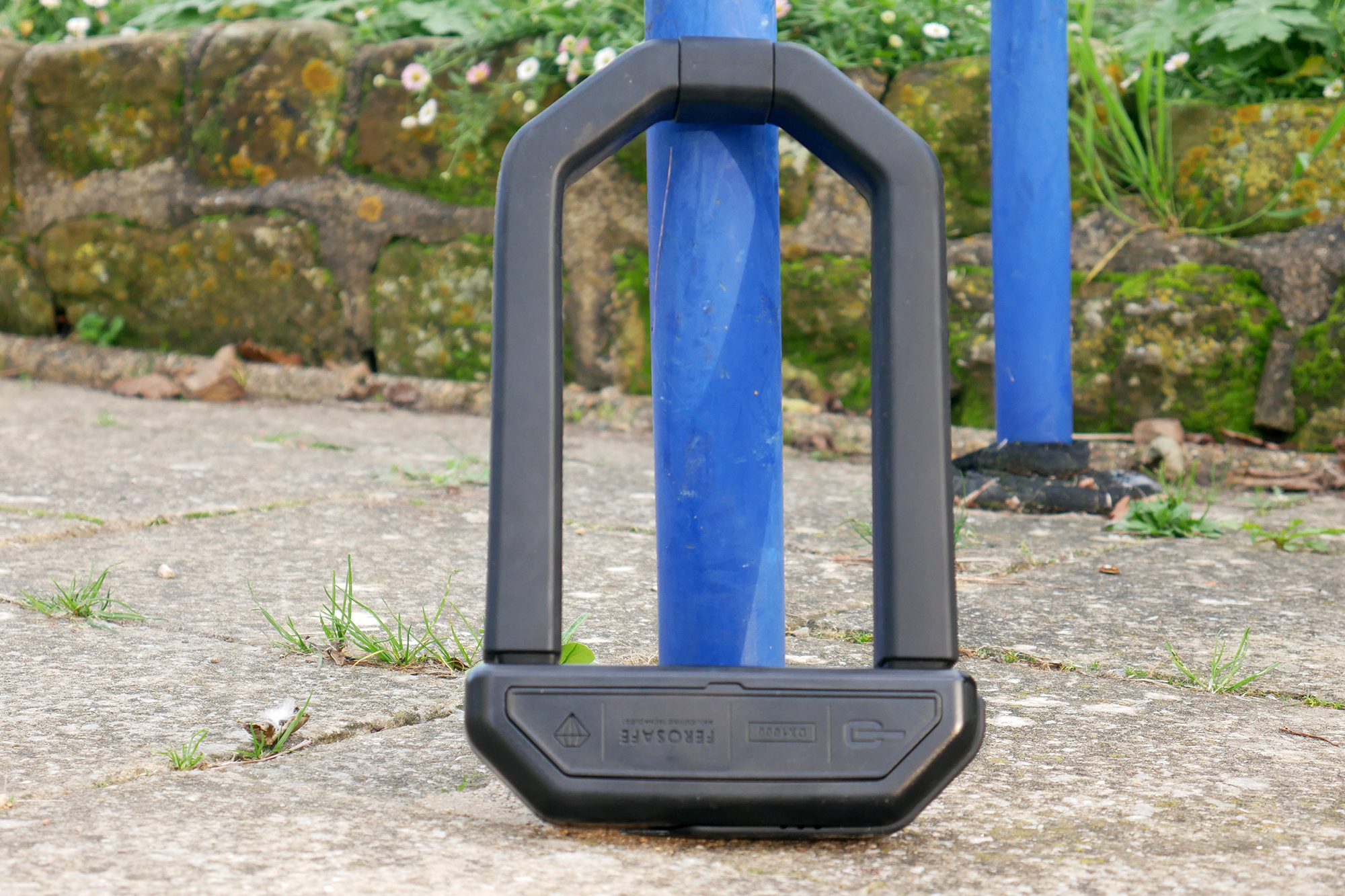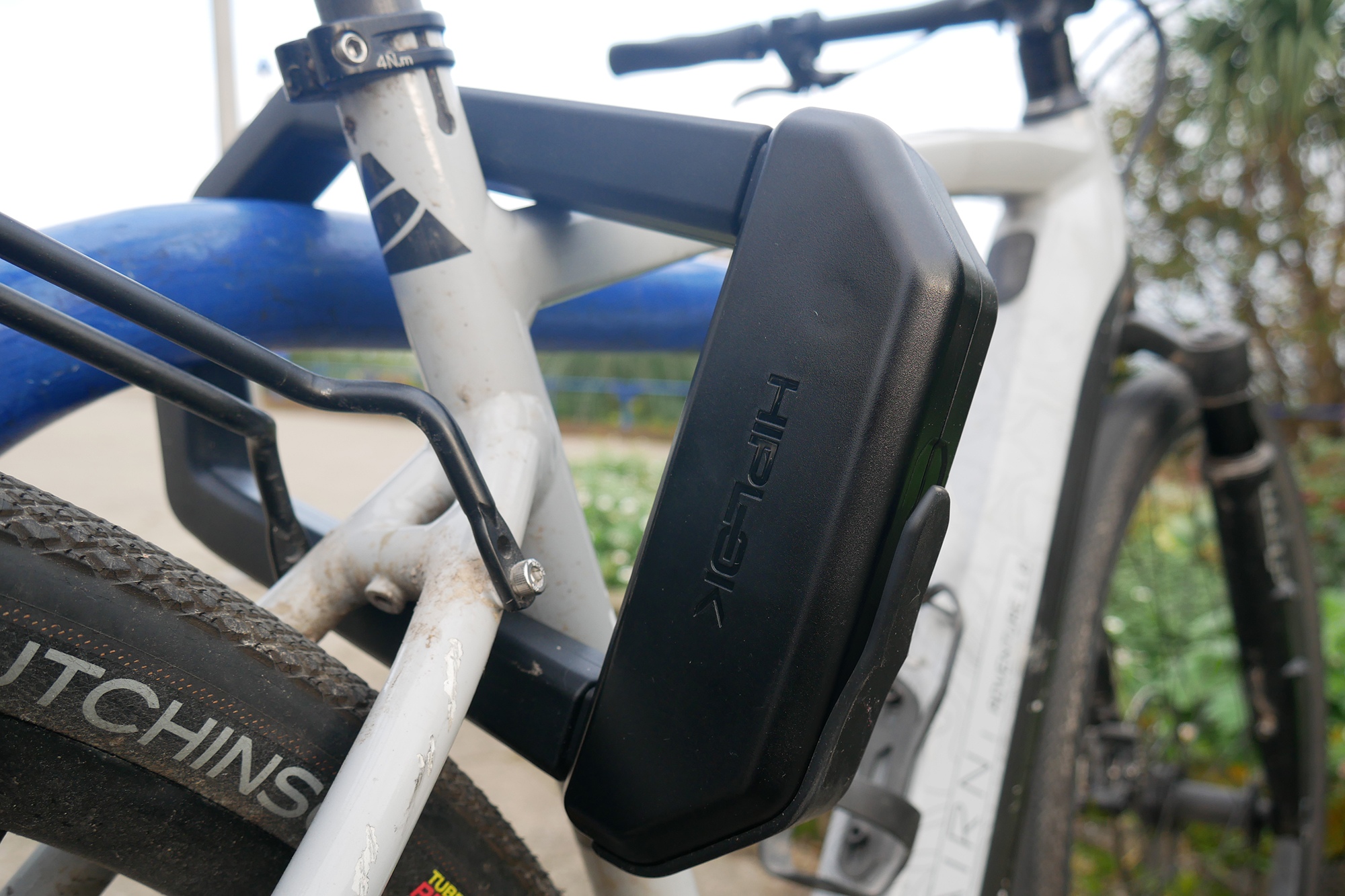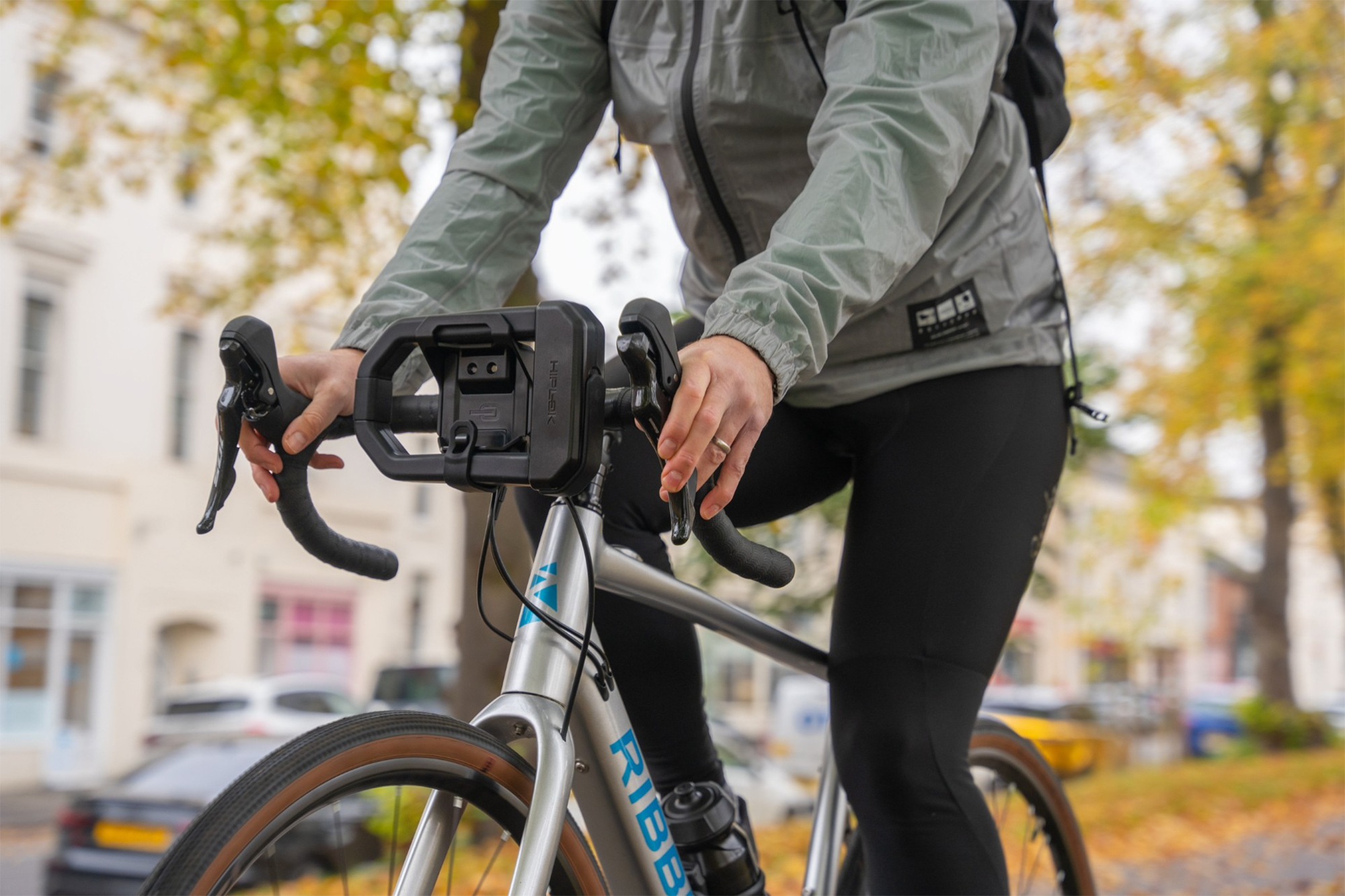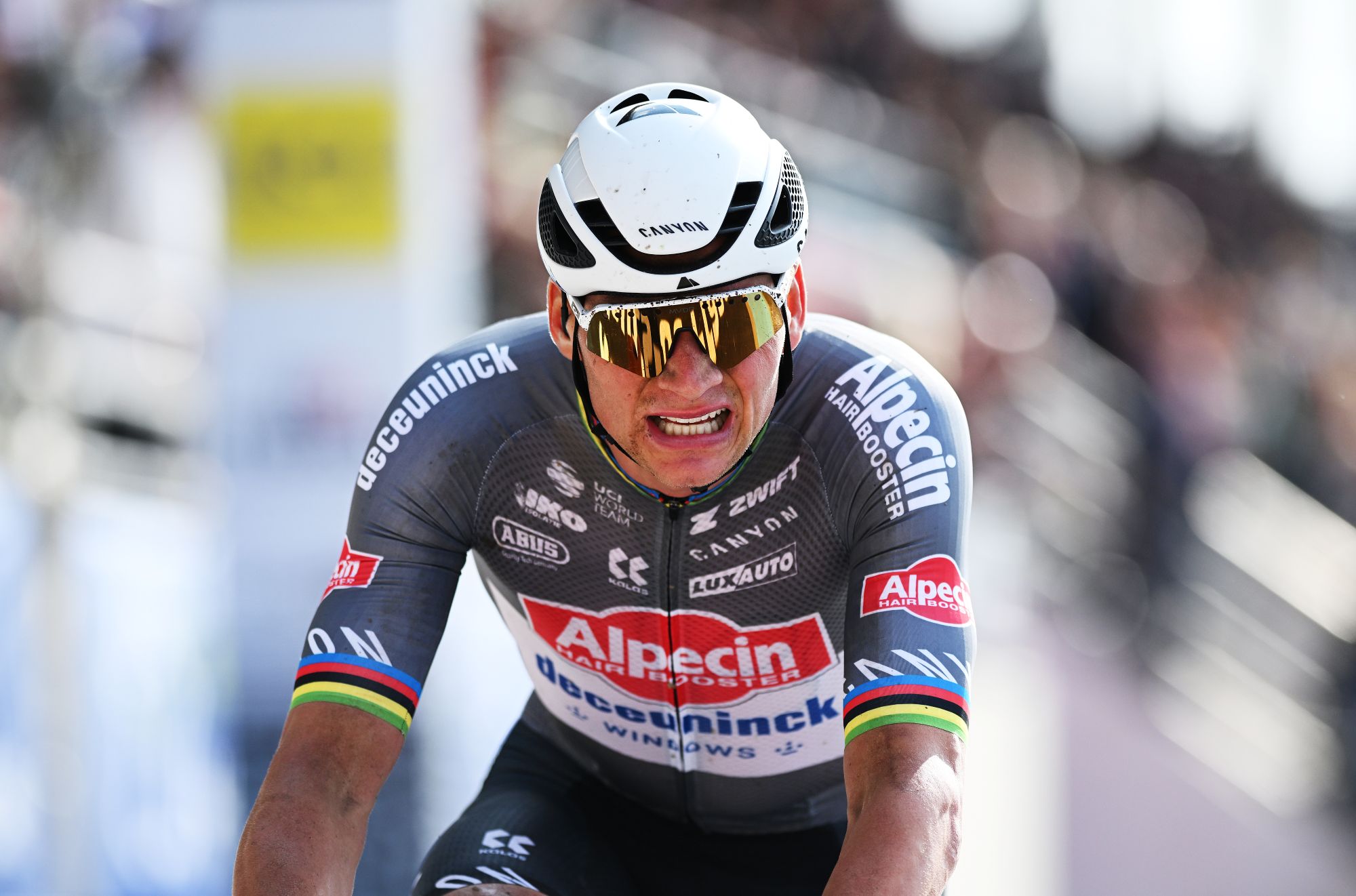Hiplok DX1000 bike lock review: one of the most secure bike locks I have ever tested
While the DX1000 impressed in our angle grinder test, this high level of security comes at quite a price

If weight is not a concern and you are looking for the highest security on the market, the Hiplok DX1000 certainly offers that. However, the high price may put some cyclists off.
-
+
Highly secure with claims of an unpickable lock
-
+
Impressively resisted angle grinder attacks
-
+
Understated
-
+
Decent amount of protection for your bike’s paintwork
-
-
Extremely heavy
-
-
Considerably more expensive than the best on the test
-
-
No way of mounting to your bike or rack
-
-
A lot of play between the shackle and the lock. While this doesn’t affect security, it's disconcerting
You can trust Cycling Weekly.
The DX1000 is diamond-rated by Sold Secure and is pitched as the best bike lock in Hiplok's range. It's the larger sibling of the original angle grinder-resistant D1000 and is substantial at 2.7kg/5.9 lbs. The DX1000 is designed specifically for bicycles with thicker tube profiles, such as E-bikes and Motorbikes, providing enhanced reach for home use or challenging locking scenarios.
It's exciting to witness cycling brands leading the charge in market innovation. Initially, Hiplok infused style with security, an area often viewed as overly serious, with its wearable locks. Now, they are taking on the challenge posed by portable angle grinders.
Construction
Hiplok has chosen to use multiple technologies, including a square profile, a graphene-reinforced hardened steel shackle, and what Hiplok refers to as its "anti-angle grinder security system” in its defence against angle grinder attacks. At 225cm²/34.4”², 20.5cm/ 8" tall, and 11cm/ 4.3" wide, the DX1000 offers the largest reach among the locks we tested. However, this has a weight drawback, as the Hiplok is very heavy at 2.7kg/ 5.9lbs.

Understated but with a serious stance
The DX1000 features a significant amount of soft material encasing the shackle and lock barrel. My quick measurement revealed that the rubber-to-metal ratio is almost double. This design will safeguard your frame while providing the Hiplok with a substantial visual presence, but it does add bulk.
A captivating feature of the DX1000 is that, according to Hiplok, nobody has picked the lock cylinder since it debuted in 2021, solidifying its reputation as one of the top products available.
Specification
Weight | 2.7kg / 5.9lbs |
Number of Keys | 3 |
Sold Secure rating | Diamond |
Reach | 20.5cm/8 inches x 11cm/4.3 Inches |
Locking Area | 225cm²/34.4”² |
Frame Mount | Yes (additional purchase) |
In use
My first impression of the Hiplok was a little underwhelming. Given the security claims of the DX1000, and as the priciest option in the test at £300/$350, I was surprised by the noticeable play between the shackle and the lock barrel. It didn't feel as premium as the Abus Granit or Litelok X3. I contacted Hiplok, which responded, “The play results from tolerances in the manufacturing processes. These tolerances do not affect the shackle's security, and the DX1000 easily meets the Sold Secure and ART testing standards.”

The Hiplok DX1000 has impressive reach
While the DX1000 performed without fault, its heft was noticeable without a proper mounting system*. This meant storing the lock in a bag or backpack during transit, which took up a significant amount of space in my pannier and limited the number of tasty continental treats I could purchase on an Aldi shopping spree.
One annoyance I had with all the locks on the test was the various attempts at weatherproofing the lock cylinders. Many have fixed systems, like Abus' metal doors or Litelok's silicone flaps, which obscure visibility and force you to feel for key engagement. Hiplok’s rubber flap cover, while simpler, provides better sight of the lock and makes key engagement easier, especially when I was awkwardly fumbling around at the bike rack.
* Hiplok, recently launched a new mount for the DX1000 that was not available during testing. You can read more about it below.
The angle grinder test
While the DX1000 didn’t stand out during usage, it also didn’t cause me any real issues. That changed when it came to the angle grinder test, where the Hiplok stepped up and performed impressively, competently resisting attacks.
The DX1000 initially matched the performance of the Litelok X3. Although I could apply considerable force to cut into the lock, the cutting disc quickly showed signs of wear. Holding the grinder steady proved difficult when trying to reach the centre of the lock, a feature that appears to be part of Hiplok's “Anti-angle grinder security system.” Each time I attempted to reposition the cutting wheel, the core's material kicked the grinder back. We managed to burn through two discs in our five-minute test, but the kickback was so violent there was no way I could cut any further through the lock.
While the OnGuard RockSolid claimed the title as best angle grinder-resistant lock, as I failed to make any cuts, the Hiplok secured second place, just ahead of the Litelok in this portion of the testing.

The extent of the damage to the Hiplok DX1000 after it was attacked with an angle grinder
Value and conclusions
At £300/$350, the Hiplok DX1000 is not only the most expensive lock in my angle grinder-resistant bike locks test but also the most expensive lock we have tested here at Cycling Weekly. For this price, I expected it to stand out from the crowd, but the DX1000 does almost the opposite - it’s understated, functional and just gets the job done. However, the DX1000’s extra weight and the fact it is £100/$100 more than our overall winner does question the its value.
That being said, its performance in the angle grinder test was impressive and, provided Hiplok’s claims surrounding their “unpickable” lock cylinder stand-up, the DX1000 offers a very high level of security for your bike.
New Mount
As I mentioned above, when I tested the Hiplok DX1000 it lacked a mounting system. Well, just last week, Hiplok announced this addition. Designed to allow the DX1000 to be mounted on your bike, it also offers rack compatibility similar to that of the Abus Granit SE, alongside compatibility with KlickFix™ and Ortlieb™ handlebar mounting systems, which is a rather neat idea.
At £25, it adds an additional cost to an already expensive lock, but given the DX1000's weight (2.7kg/ 5.9lbs - if you had already forgotten), I'd argue it's a worthwhile investment.

New handlebar mount for the DX1000 looks like a rather neat solution
How I tested this lock
After hours of research, my most noticeable finding was that opportunistic bike thieves typically have under a minute to steal a bike and leave. Many locks now have anti-twist and anti-tampering features, so they require two cuts to be removed.
This limitation is why angle grinder-resistant locks can be so valuable in the real world. Based on my findings, a thief would need several cutting discs and more than 20 minutes to cut through one of these locks.
Using a high-powered, battery-operated angle grinder with top-quality metal-specific cutting discs, I set the task to take a maximum of five minutes, which was generous considering my findings during the research phase of this group test. This allowed for disc changes and better simulated a thief's time in low-foot traffic areas or after gaining access to a shed or garage.
With twenty years of cycling commuting, fifteen of which have been dedicated to the bicycle industry, I have yet to have a bike stolen. Perhaps I've just been lucky or know something about keeping my bike safe!

Thank you for reading 20 articles this month* Join now for unlimited access
Enjoy your first month for just £1 / $1 / €1
*Read 5 free articles per month without a subscription

Join now for unlimited access
Try first month for just £1 / $1 / €1
Get The Leadout Newsletter
The latest race content, interviews, features, reviews and expert buying guides, direct to your inbox!
Like many, Matt began his bicycle industry journey on the spanners at his local bike shop. After spending his youth mountain biking, he was inspired to embrace gravel during his tenure with Evans Cycles' in-house brands, Pinnacle and Hoy Bikes. Recognising the evolving industry, Matt eagerly seized the chance to become an E-bike designer, winning several awards with the E-bike brand Cairn Cycles.
These days, Matt is likely to have a toddler sitting shotgun or off the beaten track somewhere on the South Downs.
You must confirm your public display name before commenting
Please logout and then login again, you will then be prompted to enter your display name.
-
 Cycling's riders need more protection from mindless 'fans' at races to avoid another Mathieu van der Poel Paris-Roubaix bottle incident
Cycling's riders need more protection from mindless 'fans' at races to avoid another Mathieu van der Poel Paris-Roubaix bottle incidentCycling's authorities must do everything within their power to prevent spectators from assaulting riders
By Tom Thewlis Published
-
 Man hands himself in to Belgian police after throwing full water bottle at Mathieu van der Poel during Paris-Roubaix
Man hands himself in to Belgian police after throwing full water bottle at Mathieu van der Poel during Paris-Roubaix30-year-old was on Templeuve-en-Pévèle cobbled sector when television pictures showed the bottle hitting him in the face
By Tom Thewlis Published
-
 'I'll take a top 10, that's alright in the end' - Fred Wright finishes best of British at Paris-Roubaix
'I'll take a top 10, that's alright in the end' - Fred Wright finishes best of British at Paris-RoubaixBahrain-Victorious rider came back from a mechanical on the Arenberg to place ninth
By Adam Becket Published